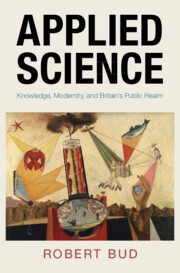Refine search
Actions for selected content:
57 results
African Correspondents in the Second World War in Burma: Reporting on Soldiers’ Experiences of Conflict, June–August 1945
-
- Journal:
- The Journal of African History / Volume 66 / 2025
- Published online by Cambridge University Press:
- 10 October 2025, e18
-
- Article
-
- You have access
- Open access
- HTML
- Export citation
5 - “Murder the Media”
- from Part II - Democracy and the Press Function
-
-
- Book:
- The Future of Press Freedom
- Published online:
- 25 July 2025
- Print publication:
- 24 July 2025, pp 52-64
-
- Chapter
-
- You have access
- Open access
- HTML
- Export citation
15 - The Enduring Significance of New York Times v. Sullivan
- from Part IV - Legal Protection for the Press Function
-
-
- Book:
- The Future of Press Freedom
- Published online:
- 25 July 2025
- Print publication:
- 24 July 2025, pp 247-256
-
- Chapter
-
- You have access
- Open access
- HTML
- Export citation
9 - Press Benefits and the Public Imagination
- from Part III - Evolving Threats to the Press Function
-
-
- Book:
- The Future of Press Freedom
- Published online:
- 25 July 2025
- Print publication:
- 24 July 2025, pp 116-127
-
- Chapter
-
- You have access
- Open access
- HTML
- Export citation
18 - A Professional Wrestler, Privacy, and the Meaning of News
- from Part V - Identifying Performers of the Press Function
-
-
- Book:
- The Future of Press Freedom
- Published online:
- 25 July 2025
- Print publication:
- 24 July 2025, pp 298-308
-
- Chapter
-
- You have access
- Open access
- HTML
- Export citation
2 - The Press and American Democracy
- from Part II - Democracy and the Press Function
-
-
- Book:
- The Future of Press Freedom
- Published online:
- 25 July 2025
- Print publication:
- 24 July 2025, pp 17-27
-
- Chapter
-
- You have access
- Open access
- HTML
- Export citation
Chapter 11 - Anarchist Media, Cuba’s War for Independence, and the Forging of a Radical Transnational Latinidad, 1880s–1890s
- from Part III - Transgressing
-
-
- Book:
- Latinx Literature in Transition, 1444–1886
- Published online:
- 06 August 2025
- Print publication:
- 17 July 2025, pp 252-270
-
- Chapter
- Export citation
3 - The Wars of Washington
-
- Book:
- Warriors in Washington
- Published online:
- 23 June 2025
- Print publication:
- 10 July 2025, pp 61-97
-
- Chapter
- Export citation
6 - Abolition: A Leninist Interpretation
-
- Book:
- Atlantic Cataclysm
- Published online:
- 13 December 2024
- Print publication:
- 13 February 2025, pp 247-291
-
- Chapter
- Export citation
6 - Peddling Propaganda: The Information Research Department and India
-
- Book:
- Spying in South Asia
- Published online:
- 12 September 2024
- Print publication:
- 12 September 2024, pp 124-152
-
- Chapter
- Export citation
Chapter 11 - Print Culture in the Nineteenth Century
- from Part II - Critical Inroads
-
-
- Book:
- A History of Argentine Literature
- Published online:
- 09 May 2024
- Print publication:
- 16 May 2024, pp 165-183
-
- Chapter
- Export citation
7 - Forging Arguments
- from Part III - The Spanish Case Studies
-
- Book:
- Balancing Strategy
- Published online:
- 25 April 2024
- Print publication:
- 02 May 2024, pp 149-175
-
- Chapter
- Export citation

Applied Science
- Knowledge, Modernity, and Britain's Public Realm
-
- Published online:
- 15 March 2024
- Print publication:
- 28 March 2024
Suicide in the press: an analysis of newspaper coverage of adolescent versus adult suicides in Italy
- Part of
-
- Journal:
- European Psychiatry / Volume 67 / Issue 1 / 2024
- Published online by Cambridge University Press:
- 17 January 2024, e9
-
- Article
-
- You have access
- Open access
- HTML
- Export citation
7 - The Fall of President Richard Nixon
-
- Book:
- High Crimes and Misdemeanors
- Published online:
- 23 November 2023
- Print publication:
- 30 November 2023, pp 175-204
-
- Chapter
- Export citation

Execution, State and Society in England, 1660–1900
-
- Published online:
- 12 October 2023
- Print publication:
- 26 October 2023
11 - Faking News
- from Part IV - Masses, Media, and Popular Judgment
-
- Book:
- The Making Sense of Politics, Media, and Law
- Published online:
- 06 April 2023
- Print publication:
- 13 April 2023, pp 230-251
-
- Chapter
-
- You have access
- Open access
- HTML
- Export citation
2 - Information Sources
-
- Book:
- African Activists in a Decolonising World
- Published online:
- 02 March 2023
- Print publication:
- 09 March 2023, pp 59-96
-
- Chapter
- Export citation
6 - Decolonising the Media: Press and Politics in Revolutionary Dar es Salaam
-
- Book:
- Revolutionary State-Making in Dar es Salaam
- Published online:
- 13 October 2022
- Print publication:
- 22 December 2022, pp 203-236
-
- Chapter
-
- You have access
- Open access
- HTML
- Export citation
Transregional by design: The early communist press in the middle east and global revolutionary networks
-
- Journal:
- Journal of Global History / Volume 18 / Issue 2 / July 2023
- Published online by Cambridge University Press:
- 13 December 2022, pp. 216-235
-
- Article
-
- You have access
- Open access
- HTML
- Export citation
